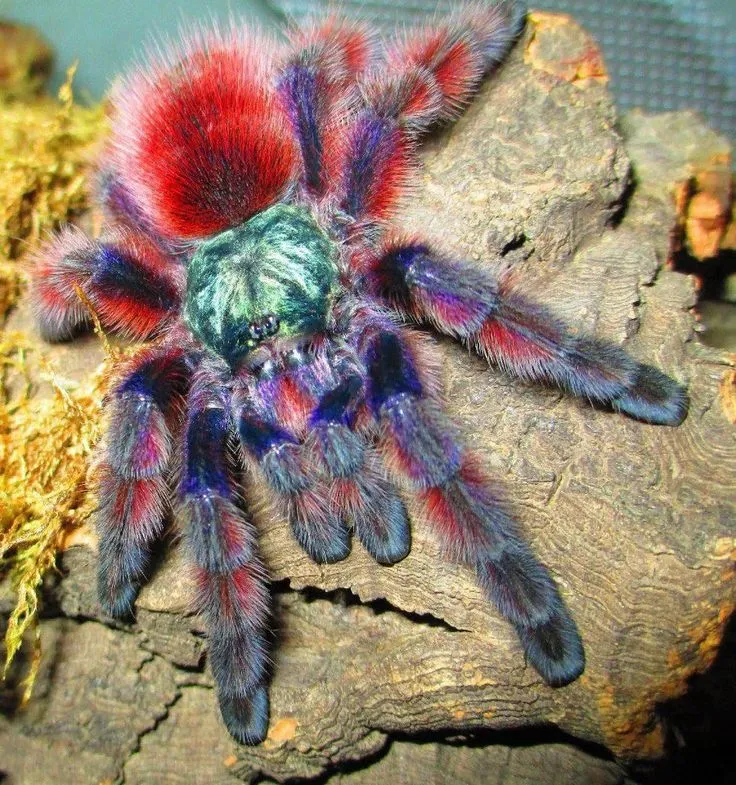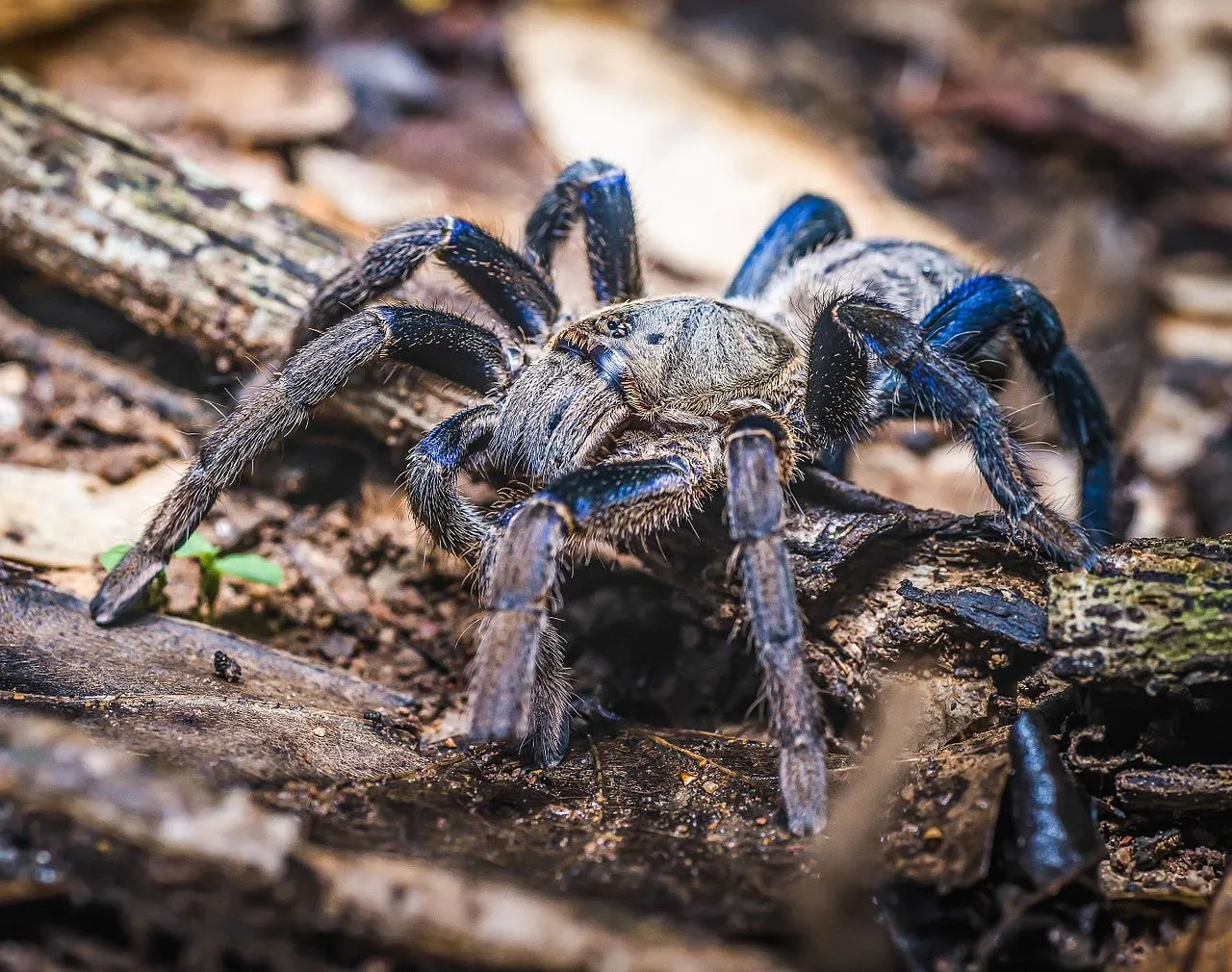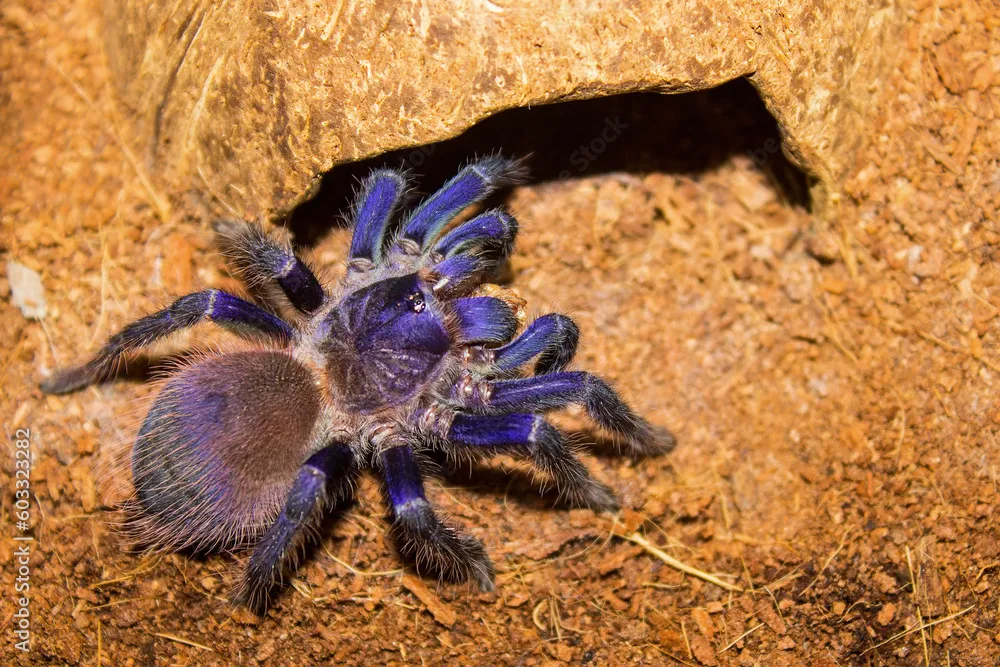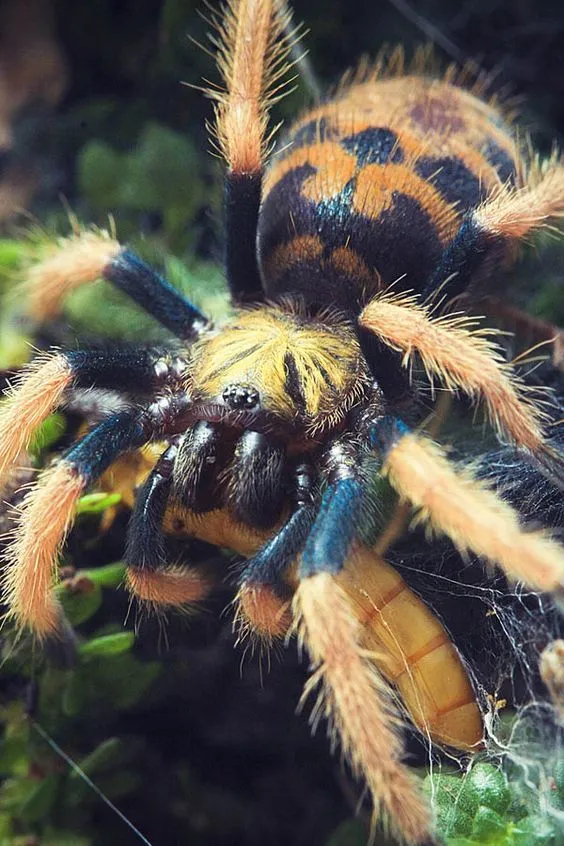What is a Blue Tarantula Spider
The blue tarantula, a captivating creature, belongs to a group of spiders celebrated for their striking coloration and intriguing behaviors. These arachnids are not just visually stunning; they are also a fascinating subject for anyone interested in the natural world. Originating from various tropical regions, these spiders have gained popularity among exotic pet enthusiasts and those fascinated by the diversity of spider species. Their vibrant blue hues set them apart from other tarantulas, making them a prized possession for many. Understanding the blue tarantula involves exploring their habitat, dietary needs, and the specific care they require to thrive. They are relatively docile and are known for their calm demeanor. These spiders often present a unique opportunity to delve into the world of invertebrates, highlighting the beauty and complexity of nature.
Appearance of Blue Tarantulas
The appearance of a blue tarantula is a defining feature, setting it apart from many other spider species. Their striking blue coloration, which ranges from electric blue to a more subdued shade, is a result of structural coloration, where the arrangement of microscopic structures on their exoskeleton scatters and reflects light in a specific way, creating the blue hue. This unique characteristic isn’t just for show; it serves as a form of camouflage in their natural habitats. The contrast between the blue body and the other features, such as the darker legs and pedipalps, adds to their aesthetic appeal. The overall impression is one of elegance and vibrancy, making them a highly sought-after species among enthusiasts.
Color Variations

While the ‘blue’ in their name suggests a single color, blue tarantulas exhibit a spectrum of shades. This variance is influenced by factors such as species, age, and environmental conditions. Some may appear a vibrant, almost neon blue, while others present a more muted, steel-blue tone. This diversity adds to their appeal, as each spider possesses a unique color profile. The intensity of their blue can also change during molting, with the colors often becoming more vibrant after shedding their exoskeleton. This dynamic coloration is one of the many fascinating aspects of the blue tarantula.
Size and Physical Features
Size is another key characteristic when considering the appearance of a blue tarantula. These spiders typically have a leg span that can range from four to six inches, depending on the species. The body itself is compact, with a rounded abdomen and a cephalothorax that houses the head and other vital organs. Their legs are covered in fine hairs, which help them grip surfaces and sense their environment. The chelicerae, or fangs, are also prominent, used for capturing and subduing prey. Although they have a formidable appearance, these spiders are generally not aggressive and are known for their relatively docile nature.
Where Do Blue Tarantulas Live
Understanding the natural habitat of the blue tarantula is essential to appreciating their survival strategies and unique characteristics. These spiders thrive in specific environmental conditions, which significantly impact their health and behavior. Their choice of dwelling and surrounding environments showcase their adaptability and are critical to their survival. Their preference for particular areas and climates makes them unique. Comprehending their natural habitat will help you understand their behavior and unique traits.
Natural Habitats

Blue tarantulas primarily inhabit tropical and subtropical regions. They are frequently found in areas with high humidity and moderate temperatures, which is crucial for their survival. Their homes are usually located in dense forests, where they have access to shelter and prey. Some species are terrestrial, living in burrows they dig in the ground, while others may be found in the undergrowth or among the roots of trees. They create elaborate silk webs at the entrance to their burrows or use the silk to line the burrow walls, enhancing their living space. The natural habitat is fundamental to supporting their biological requirements.
Geographic Distribution
Geographically, blue tarantulas are distributed across several areas. Key regions include Southeast Asia, with notable populations in countries such as Thailand and Vietnam. They are also present in parts of South America. The specific distribution varies by species, with each having its preferred microclimate within these broader regions. Their presence in specific regions underscores the importance of conserving these natural habitats, as any environmental changes can significantly impact the survival of these fascinating spiders. Conservation efforts are essential for the well-being of the Blue Tarantula and their natural habitats.
What Do Blue Tarantulas Eat
The diet of a blue tarantula is a critical aspect of its health, growth, and overall well-being. As carnivores, these spiders require a diet rich in protein and nutrients to thrive. Their feeding habits and preferences in their natural environments and in captivity illustrate their survival adaptations. The type of food they consume and their feeding patterns are essential factors to be considered. Comprehending their diet gives an insight into their natural behaviors.
Dietary Needs

Blue tarantulas are primarily insectivores, with their diet consisting mainly of insects. In the wild, they consume a variety of insects they can capture, including crickets, cockroaches, and small beetles. In captivity, a well-balanced diet replicates this diversity. It is important to feed them a variety of insects to ensure they get the nutrients they need to maintain their health. The size and frequency of feeding depend on the spider’s age, with younger spiders eating more frequently than adults. Providing a diet that meets their nutritional needs is a cornerstone of responsible tarantula care.
Feeding Habits
Blue tarantulas are ambush predators, relying on their speed and venom to capture their prey. They typically wait in or near their burrows for an unsuspecting insect to come within striking range. Once an insect is close enough, the tarantula quickly pounces, injecting venom to immobilize it. The spider then uses its chelicerae to break down the prey and feed. In captivity, the feeding process is usually simpler, with the spider readily accepting live insects offered by their owners. Monitoring their feeding behavior can provide insights into their health and appetite, which is critical for good care.
How to Care for a Blue Tarantula Spider
Caring for a blue tarantula involves creating a suitable habitat and providing proper nutrition. It is a rewarding experience for those interested in exotic pets. Understanding the specific requirements of these spiders ensures their well-being and longevity. With the correct care, the blue tarantula can be a unique pet. By providing a stable environment and understanding their needs, you can significantly contribute to the health and contentment of your pet. It’s a commitment that brings an exciting element of the natural world into your life.
Creating the Right Habitat

Setting up the right habitat is the first and most important step in caring for a blue tarantula. The enclosure should be an appropriate size for the spider, allowing it to move around comfortably. For terrestrial species, a terrarium with a secure lid is suitable, and a burrow or hideaway is a good idea. The substrate, which is the material covering the bottom of the enclosure, should be deep enough for the spider to burrow. Coconut fiber or a mix of peat moss and vermiculite are ideal choices. The enclosure should also have proper ventilation to prevent the buildup of humidity and mold. It’s critical to maintain a clean and stable environment for the health and safety of your pet.
Temperature and Humidity Control
Controlling temperature and humidity is essential for the well-being of a blue tarantula, as these spiders come from tropical environments. The ideal temperature range is typically between 75 to 85 degrees Fahrenheit (24 to 29 degrees Celsius). A heating pad or a heat lamp can be used to maintain the proper temperature, ensuring that the enclosure remains comfortable. Humidity levels should be kept between 60 to 70%, which can be achieved by misting the enclosure with water and ensuring proper ventilation. Regular monitoring with a hygrometer is essential to verify the conditions inside the enclosure. This will help you create a perfect environment for your pet.
Substrate and Enclosure Needs
Choosing the right substrate and enclosure is critical for the health and comfort of your blue tarantula. As mentioned earlier, the substrate should be deep enough for burrowing and retain moisture. Coconut fiber, peat moss, or a mix of both work well and are readily available at pet stores. The enclosure itself should be made of a material that is easy to clean and offers a good view of the spider. Glass or clear plastic terrariums are popular choices, with secure lids to prevent escape. Also, provide the spider with a hideaway, such as a piece of cork bark or a decorative cave, which will give them a sense of security and encourage natural behaviors. This habitat will allow them to feel safe, which will encourage their overall health.
How to Handle a Blue Tarantula Spider

Handling a blue tarantula should be done with care, as it is crucial for the well-being of both the spider and the handler. Although they are generally docile, it is important to be aware of safety precautions and appropriate handling techniques. Approach this aspect of caring for the spider responsibly and thoughtfully. Being prepared and informed about potential risks will minimize the chance of injury to you and your spider. This approach enhances the bond and ensures a secure environment for both.
Safety Precautions
Before handling a blue tarantula, it is important to take several safety precautions. Always wash your hands thoroughly before and after handling the spider. Avoid handling them if you have open wounds on your hands, as the spider’s venom or the hairs on their body can cause irritation or allergic reactions. Handle the spider over a soft surface, such as a bed or a carpet, to prevent injury if it falls. Have a plan in case the spider does escape, and be calm during the process. Keeping your composure, and taking precautions, are important to a safe experience.
Handling Techniques
If you choose to handle your blue tarantula, do so gently. The best way to interact is to allow the spider to walk onto your hand, rather than trying to grab or pick it up. Move slowly and avoid sudden movements to prevent startling the spider. Always support the spider’s body and avoid squeezing it. If the spider shows signs of stress, such as raising its front legs or flicking hairs from its abdomen, put it back in its enclosure immediately. Handling should be kept to a minimum, as stress can impact their health. Observe your spider, and you will grow more comfortable with these creatures.
Interesting Facts About Blue Tarantulas

Blue tarantulas have some compelling and intriguing traits. These characteristics go beyond their appearances and explain the captivating aspects of these animals. Discovering unique features reveals the wonders of the natural world and highlights the special biology of these arachnids. Their abilities and behaviors are often surprising, and make them a great focus for scientists and nature enthusiasts.
Lifespan and Growth
The lifespan and growth patterns of blue tarantulas are fascinating aspects of their biology. Female blue tarantulas generally live longer than males, with a lifespan that can extend up to 12 years in captivity. Males usually live for 3 to 5 years. They grow through a process called molting, where they shed their exoskeleton to grow larger. This process can take several hours, and the spider is extremely vulnerable during this time. The frequency of molting decreases as they mature. Understanding the lifespan and growth cycle is fundamental to providing them with proper care.
Unique Behaviors and Traits
Blue tarantulas exhibit several unique behaviors and traits that make them a captivating species. One of their key features is their defensive behavior, which includes flicking urticating hairs from their abdomen as a defense mechanism. They can also display a threat posture, raising their front legs and fangs to appear more imposing. The spiders are nocturnal hunters and spend most of their time in burrows or hiding places. They also demonstrate interesting courtship rituals, where the males will drum on the ground to attract a mate. These behaviors showcase their adaptation to the environment, and give you a glimpse into their intriguing nature.
